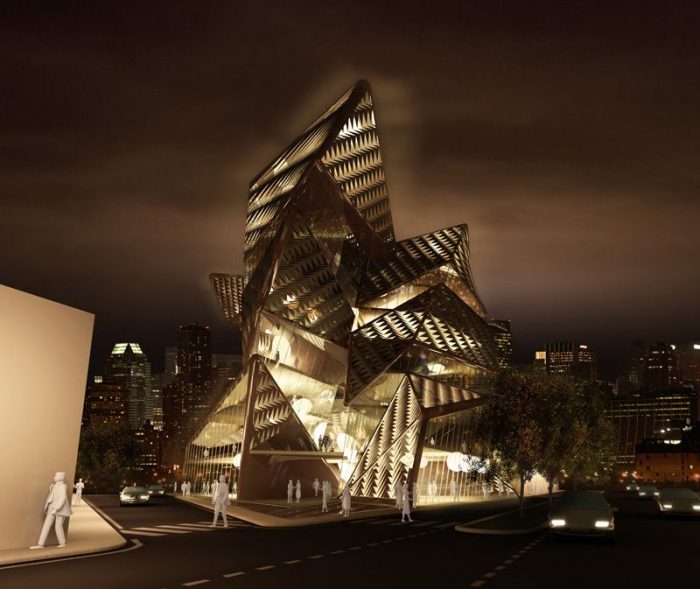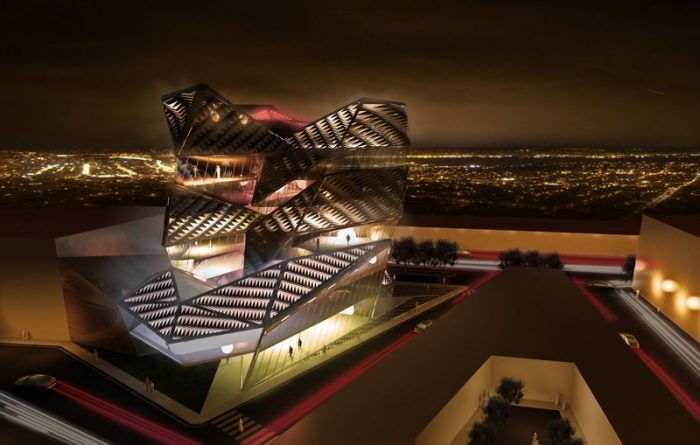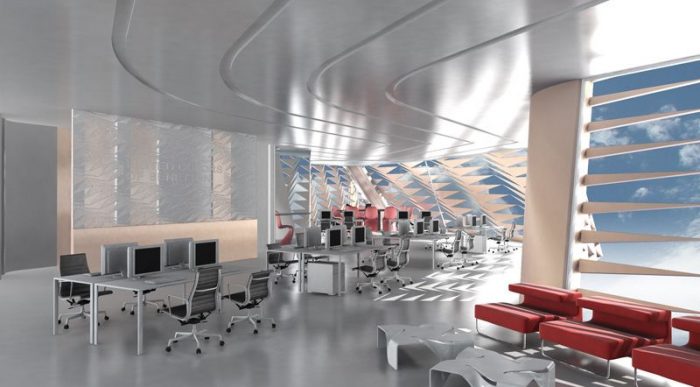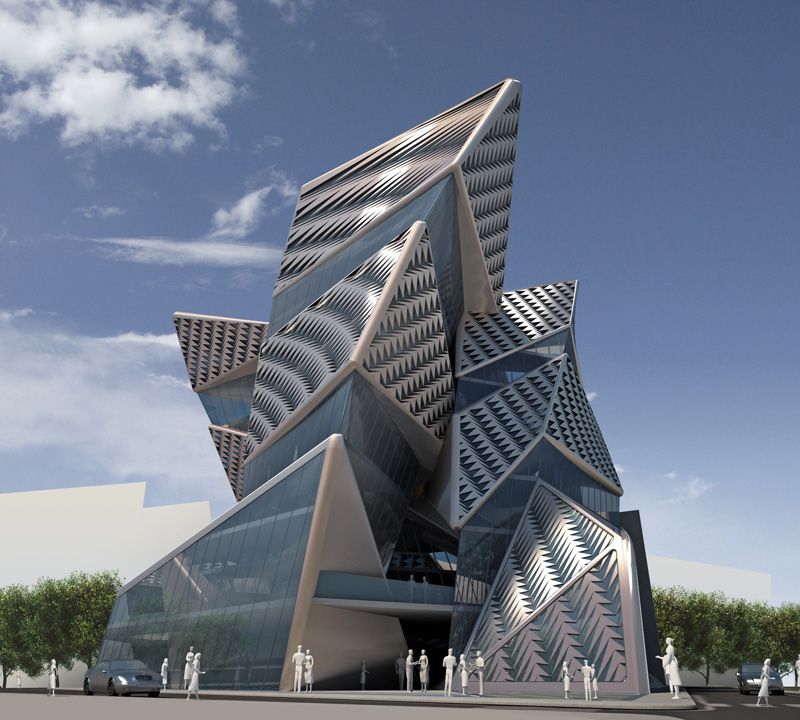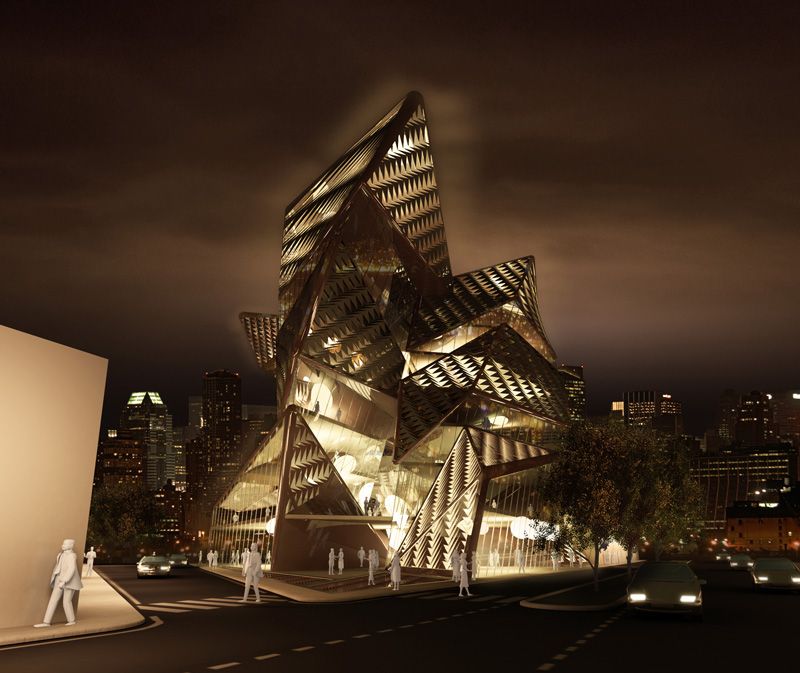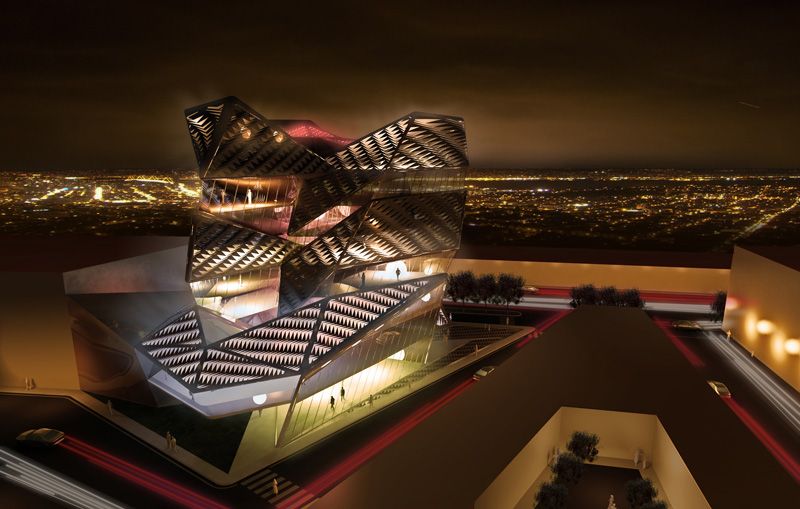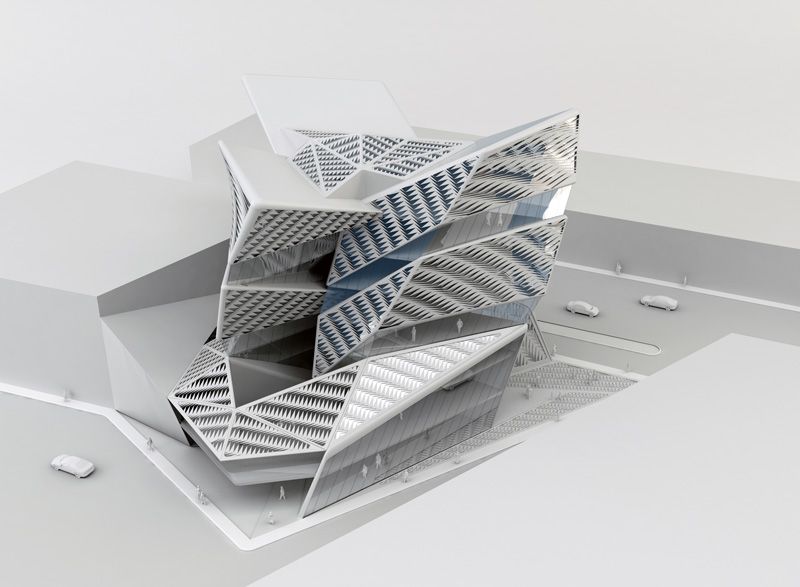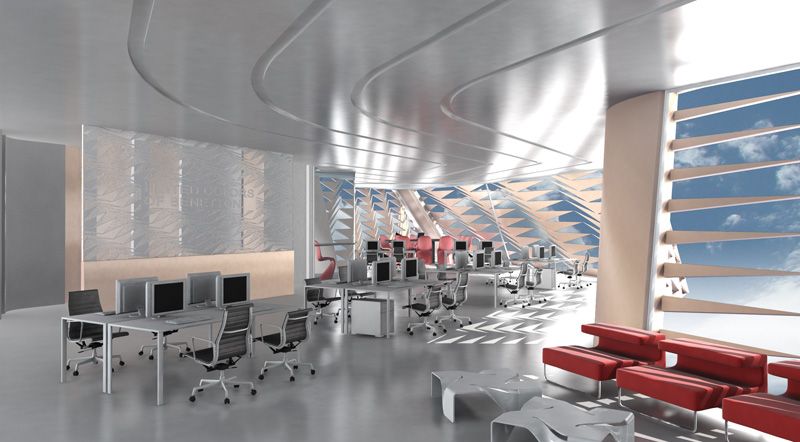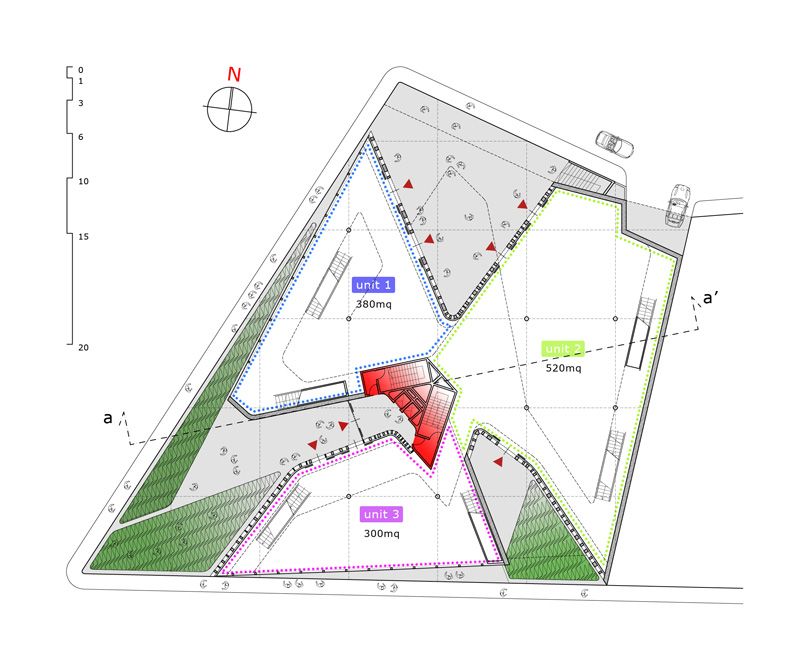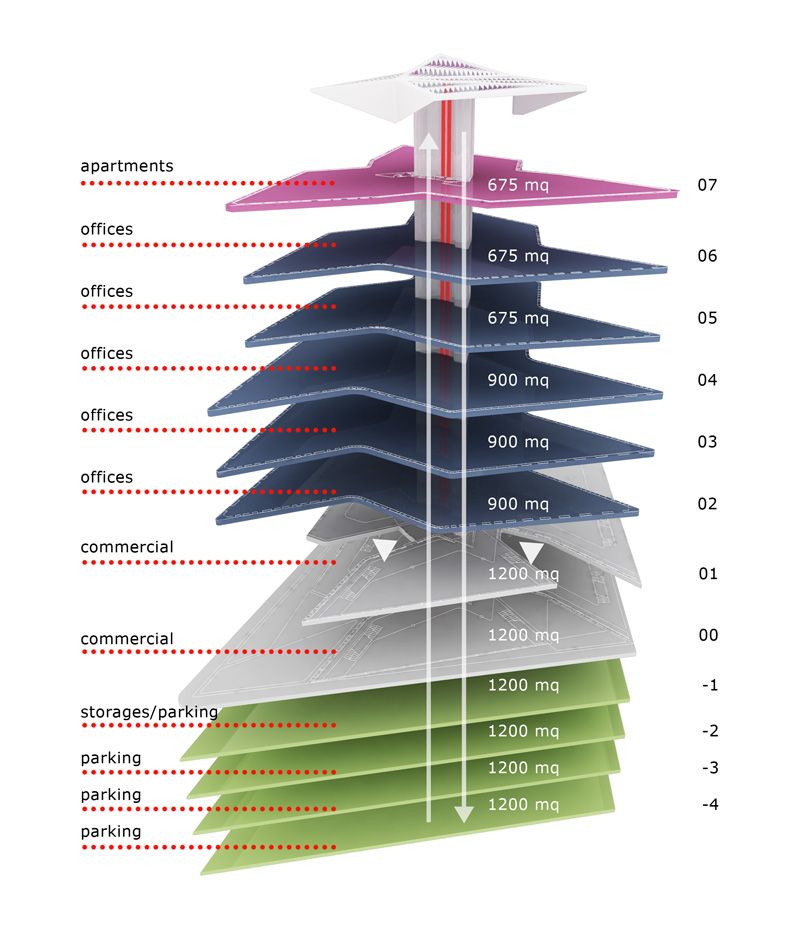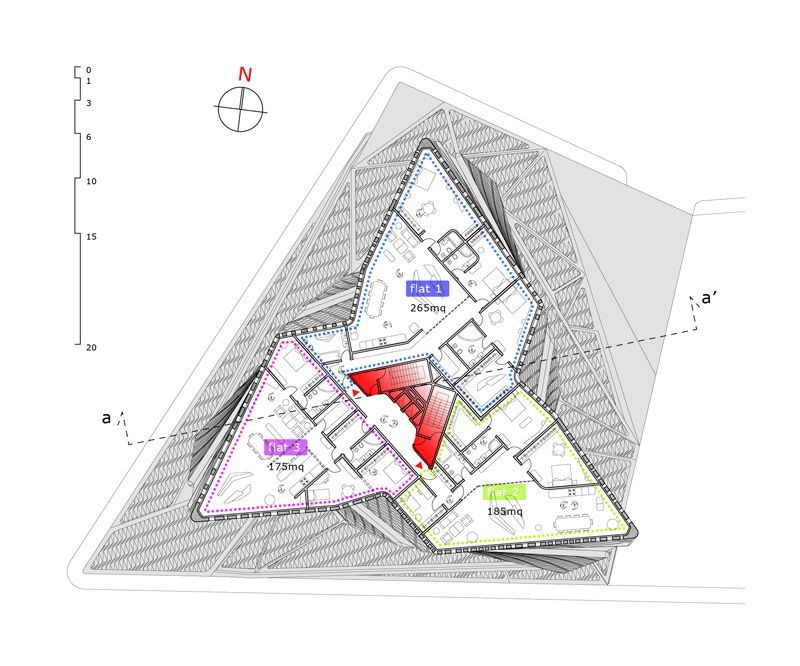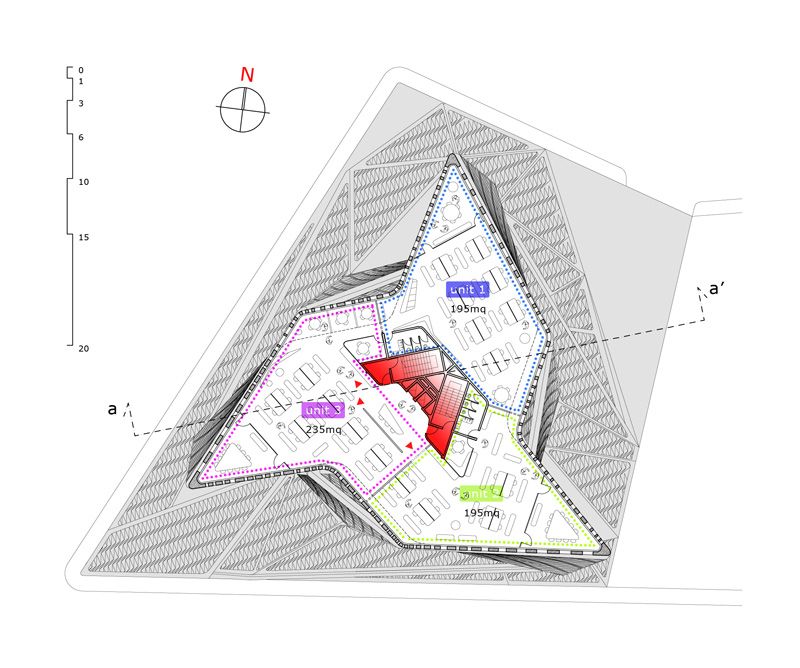The interweaving of form and structure are only two strands in the fabric that makes up architecture. With all the thoughts and considerations that go into even the simplest designs it’s a wonder that anything reaches the stage of completion and actually gets built. Even though this project was a part of a competition and may never be more than ideas, renderings, and drawings, it’s clear that the architect’s journey to reach this point carries with it more meaning than the finished structure ever could, which is thoroughly explained by AquiliAlberg in their following project description.In Persia, language has a powerful symbolic narrative function, that not only explains the power of charm, but also the typical, the recurrence of certain symbols which are dotted legend, poetry, textiles, the thumbnails until you arrive to architecture. Symbolism in Persian, with its repertoire of typical and recurring images, the flight between analog and fantastic image and meaning, seems to almost always be the work not of an individual but of an entire group, in a symbol that expresses their cultural identity, a collective religious sensitivity, under the penalty of continued foreign domination. Dance illuminated daily narrated thousand stories and the understanding of symbolic language is collective, popular.
The language has come to Europe preserved, delicate casket, narrating symbol: symbols tell who traveled for millennia, on the scrolls of the books but also on damask fabrics and arabesques carpets. All spoke from town to town and all were included: a true story handed down a collective culture and millennial. The planning process that we pursued is rooted in this tradition, repeating a process already seen and tested in the historical monuments of the city of Tehran, where the two-dimensional symbol is evolving in a third-dimensional volume.
After all what process could be better adapted to the new headquarters of Benetton if not the evolution of the texture of a fabric in a building, representative for the group itself? The theme of the contest is then interpreted through the inclusion of three new volumes that are identical to each other, rotated and merged into a single volume. The pattern chosen from a Persian fabric is used in its two-dimensional element as a basic skin coating or paving, to evolve and shape the morphology. The positive (the mass) and the negative parts of the texture (the opening) complementing each other, creating both, a solid volume and a trasparent volume which allows natural light to enter the space, enriching the internal space by creating a play between shadow and light.
The dynamic pattern wraps the form at all levels of scale in a single rotating gesture, following the morphological evolution. Its upward momentum reveals the rotation as a design consequence for interacting with the whole city surrounding. The skin is a double skin technology designed to incorporate sun shading as small photovoltaic panels for the exploitation of solar energy, ensuring energy independence in part of the building. The outer casing adjusts and optimizes the thermal dispersion, defining a new physical body and merging several functions in one building. A showcase of the city, a thing intended to settle in ones mind and become its own image of the city. The ground floor allows the various accesses to divide the different functions. Large windows characterize the volumes of commercial spaces, connected by escalators the ground floor with the upper floors and with the lower storage areas. The plans for the offices are divided into several units and accessible from a single core that also incorporates the emergency exits.
The top floor apartments, (as required by the notice), have been made flexible through the particular plan and the vertical structure, with the exception of the internal core.
The particular plant has been designed to enable all areas to benefit from natural light and panoramic views. A split-level layout of the interior has the capacity to mutate and reconfigure repeatedly over time. The logic of “Open Space, and column free structure (thanks to the thickness of the floors and construction technology), provides a variety of different spatial configurations through a system of movable walls that will dialogue with the presence of discontinuous mesh that in turn assumes the role of, connector, separator, and part of furniture or a simple visual separation. An integral part of the project is the search of an identity between the form and the structure, obtained by the interweaving of the two, JUST LIKE A FABRIC.


